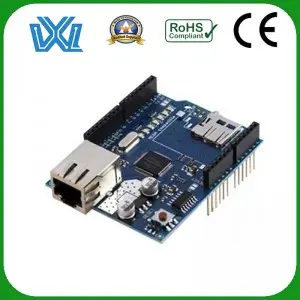In the world of modern technology, there is an unsung hero behind the scenes, playing a vital role in the countless gadgets and devices we use every day. Its abbreviation is PCB, which stands for Printed Circuit Board. While the term may be unfamiliar to most, its importance is unmatched as it is at the heart of an electronic device. Today, we’ll embark on an informative journey to explore what a PCB is and reveal its integral role in shaping our technology landscape.
What are PCBs?
Essentially, a PCB is a flat panel made of a non-conductive material such as fiberglass or composite epoxy, on which a thin layer of copper or other conductive metal is laid. These copper tracks act as pathways that connect the different electronic components of the device, including resistors, capacitors and microchips. Essentially, a PCB acts as a skeletal framework that houses the complex network of electrical connections that make it an integral part of modern electronics.
Evolution of PCBs
The concept of a PCB dates back to the early 20th century, when electronic devices were built using point-to-point wiring, which proved to be inefficient and error-prone. The advent of the PCB revolutionized the manufacturing process, providing a standardized and reliable means of interconnecting components. Over the decades, PCB technology has made remarkable progress, making it possible to make electronic devices smaller and more powerful.
PCB: the backbone of technology
PCB has become an irreplaceable part of our daily life. They permeate nearly every aspect of our lives, from smartphones and tablets to televisions and cars. The versatility of PCBs allows them to be customized for specific purposes, ensuring seamless integration into a wide variety of devices.
Benefits of PCBs
The rise of PCB technology has brought numerous advantages to technology and manufacturing:
1. Compactness and cost-effectiveness: PCBs allow dense arrangement of components, reducing device size and optimizing performance. Furthermore, mass production of PCBs is cost-effective due to their standardized design and manufacturing process.
2. Reliability and Durability: The rigid nature of the PCB makes it resistant to heat, moisture and mechanical stress, ensuring the longevity of electronic equipment.
3. Improved performance: Due to the shorter interconnection paths, the PCB facilitates the efficient flow of electrical signals, thereby minimizing signal loss and improving performance.
4. Ease of diagnosis and repair: The organized structure of the PCB simplifies the fault diagnosis and repair process, resulting in faster turnaround time and lower costs.
The Future Impact of PCBs
As technology continues to push the boundaries, PCBs will continue to evolve. With the advent of flexible PCBs, we can expect electronics to blend seamlessly into our everyday lives. In addition, advances in PCB assembly technology, such as surface mount technology, will increase manufacturing efficiency and lead to smaller, more powerful electronic devices.
In conclusion, PCBs (or Printed Circuit Boards) form the invisible link of modern technology and are the basis of countless electronic devices. From the early days of point-to-point wiring to the current era of ultra-compact and high-performance electronics, PCBs have played a key role in shaping our technology landscape. Looking ahead, it’s clear that PCBs will continue to push the boundaries of innovation, enabling breakthrough technologies we haven’t yet imagined. So the next time you pick up your smartphone or turn on your computer, remember the unsung hero at work connecting the dots of our digital world.
Post time: Aug-21-2023

